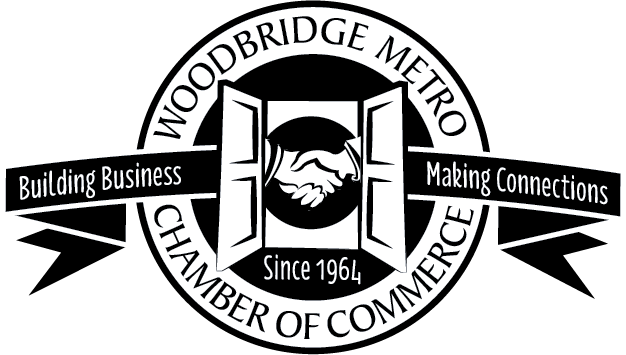A Better Way to Make People Care About Your Business: Here Are a Few
A Better Way to Make People Care About Your Business: Here Are a Few
If you run a business, chances are your marketing materials are somewhere between “in progress” and “we’ll get to it.” Maybe you’ve got a flyer that still uses a photo from 2017, or an email template that screams corporate but not in a good way. The truth is, getting your marketing in order feels like cleaning out a storage closet—important, necessary, and never quite urgent enough to hit the top of your to-do list. But if you’re trying to get more people to care, to click, to call, or to stop scrolling and actually notice, then sharpening your materials isn’t optional—it’s the baseline.
Know What You're Really Selling
You might think you're selling a product, a service, or even a lifestyle, but most of the time you're really selling a solution. Busy business owners often default to industry language or detailed feature lists, but what people actually want to know is how you're going to make their life better. A good marketing piece doesn’t just describe the thing—it positions that thing as the answer to a problem they feel every day. If you can reframe your message to highlight that benefit clearly and immediately, you’ll get attention from people who were otherwise halfway out the door.
Your Design Isn’t Just Aesthetic—It’s Direction
Let’s get this out of the way: your color palette is not the reason people aren’t buying. But layout, visual hierarchy, and clarity absolutely are. A clean, intentionally designed piece of marketing guides your audience toward action without making them think too hard. Too many elements crammed into a flyer or brochure—or worse, a website homepage—turns into noise. Give people a visual path to follow, use space to your advantage, and make sure your call-to-action doesn’t have to compete with six other buttons.
Fonts That Say the Wrong Thing
It’s easy to overlook, but the font you use in a brochure or on a storefront sign sends a message long before anyone reads the words. When those fonts feel outdated—think something better left in a 2003 PowerPoint presentation—they quietly tell your audience that your brand hasn’t evolved. That mismatch can create a subtle dissonance, making your materials feel stale even if your service is cutting-edge. This is a good one to assess with online font-matching tools that make it simple to identify tired typefaces and replace them with ones that actually reflect who you are today.
Speak Like a Human, Not a Billboard
There’s a weird thing that happens when people start writing marketing copy—they stop sounding like themselves. Suddenly, everything is “innovative,” “scalable,” or “disruptive,” and none of it actually means anything. What resonates more? Straight talk. The way you’d explain what you do at a dinner party, not a conference keynote. Ditch the buzzwords and try being conversational. Humor, specificity, and a little personality can go a long way in getting someone to stop and listen.
Use Proof, Not Promises
Saying you're the best at something doesn't move people. Showing them why—through testimonials, case studies, numbers, or even a well-told anecdote—does. Proof builds trust faster than polished taglines ever will. And trust is what gets people to click “buy,” “book a call,” or “learn more.” Take the time to gather real-world results and stories, then feature them front and center. It’s one thing to say you’re reliable. It’s another to show someone whose business was saved because you actually delivered.
Don’t Try to Be Everywhere—Just Be Present Where It Counts
There’s pressure to be on every platform, in every inbox, on every screen. But if you’re spread thin, your message will be too. It’s better to have two or three places where your marketing is consistent, well-designed, and regularly updated than to be half-visible in ten. Figure out where your customers actually hang out—where they scroll, where they read, where they search—and prioritize there. Presence isn’t about volume. It’s about showing up well.
Templates Are Not the Enemy—Bad Templates Are
A lot of business owners shy away from using templates because they feel generic, but that’s only true if you don’t customize them. A good template is just a shortcut for structure—it gives you the bones so you can spend time on the voice, the imagery, and the unique angle. If you’re not a designer or a copywriter, there’s zero shame in using tools that make it easier. What matters is the thought you put into tailoring that structure to your brand. Personalization wins, even when the base is borrowed.
Let Your Customers Finish the Sentence
Sometimes the most effective thing you can do is leave a little room for imagination. Good marketing doesn't answer every question; it invites the next one. Whether it's a line that teases a transformation or an image that makes someone wonder "what if," your materials should create just enough intrigue to pull someone forward. You don’t need to say everything. You need to say just enough that they want to know more—and that’s what gets them to call, click, or come in.
You don’t need to be a marketing genius to make materials that work—you just need to get clear on what you’re offering, why it matters, and how you’re saying it. Most business owners already have the core message buried somewhere in their brain or on a cluttered Google Doc. The challenge is pulling it out, shaping it simply, and packaging it in a way people can absorb quickly. Less gloss, more grip. That’s what cuts through.
Unlock the potential of your business by joining the Woodbridge Chamber of Commerce, where you can connect, grow, and thrive within a vibrant community dedicated to your success!
